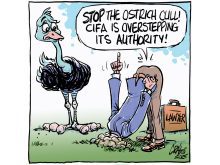Elaine Shein is Managing Editor of the Western Producer. Last week, she described how a 1990 public consultation’s findings on government accountability have not been implemented. This week, she looks at what the study said about agriculture.
The 1990 document Leading the Way: a Blueprint for Saskatchewan was the result of meetings involving more than 2,000 people in 270 communities.
Five years ago, the background to all these meetings included low grain prices, high numbers of farm foreclosures and dwindling small towns.
People feared the loss of the family farm and wondered what role it would play in the province’s future.
Read Also

Budget seen as fairly solid, but worrying cracks appear
The reaction from the agriculture industry to prime minister Mark Carney’s first budget handed down November 4th has been largely positive.
Jump to the present. Small towns and family farms continue to slowly disappear, replaced by abandoned yards and boarded-up buildings.
But grain prices are much higher, and the number of farm foreclosures is now rarely mentioned.
Five years after people contributed to the Leading the Way blueprint, some of their dreams have become reality but there still remain many ideas that need to be pursued by courageous people, of any political affiliation, to lead the province successfully into the 21st century.
One part of the “blueprint” declared: “We in Saskatchewan are challenged to diversify from our alliance on agriculture and resource industries into a broader-based economy. We can no longer count on improved crop yields or higher prices for commodities to ensure the health of our economy.”
Attitudes have begun to change. Last year, for example, the province with a wheat mentality grew a record acreage of canola; and ethanol plants are being pursued seriously in several communities.
The specific recommendations in agriculture were: Promote the development of value-added processing activities, and “work vigorously with other governments … to bring about the changes that are necessary in areas such as grain pricing, interest-rate subsidies, and freight rates.”
It took a change in federal government to institute some of these controversial changes, and the impact is just beginning to hit producers.
Other suggestions: Producers must take advantage of emerging markets for non-traditional meats (fowl, fish and game); municipal governments should encourage development of market gardens and greenhouses; producers must take advantage of opportunities in growing, harvesting and marketing of horticultural and native crops (mushrooms, saskatoon berries, wild rice); and aggressively ensure that farm inputs (fertilizers, chemicals, equipment and fuels) are produced in Saskatchewan wherever possible.
In 1990, producers were asked to pay attention to chemical-free farming and organic agricultural products.
As a recent special report in the Western Producer has shown, there remain hurdles such as “government neglect, divisions among organic growers and some farmer hostility.”
Also in 1990, the provincial government was asked to examine the prices of major farm inputs to ensure competitive prices.
Last year’s skyrocketing fertilizer prices, continued increases in fuel to beyond Gulf War prices, and the lack of decreases in equipment costs show that the government has still not conquered these challenges facing farmers.
It’s time for the courageous leaders to step forward and shape up Saskatchewan for the next century.














